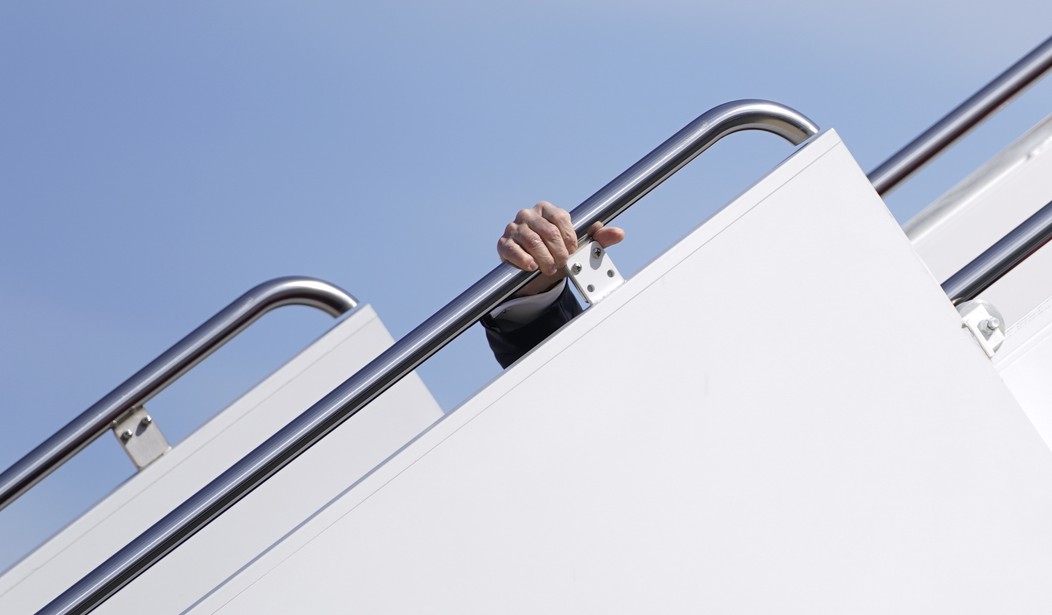CNN called the November retail sales figure a “disappointingly sluggish” start to the holiday. The Wall Street Journal called the 0.3% gain “modest.” The result could be something else — a retreat. The Washington Post notes that the figure missed expectations by a significant amount, but that’s not the only thing missing:
Retail sales edged up 0.3 percent in November from the month before, the Commerce Department reported Wednesday, well below the 0.8 percent gain forecast by economists. It’s also a significant slowdown from the 1.7 percent spike recorded in October, when many Americans began their holiday spending in earnest.
The categories with the largest increases reflected the rising costs of fuel and food, with gas stations notching a 1.7 percent jump in sales. Spending at restaurants and bars rose 1 percent, while grocery store sales climbed 0.9 percent.
But spending was down considerably in key holiday categories compared with October, when many retailers began rolling out early Black Friday deals. Department store sales slumped 5.4 percent, while electronics and appliance stores posted a 4.6 percent decline.
“Stubbornly higher prices — which consumers had shrugged off in recent months — are finally taking a toll on household budgets,” said Matthew Sherwood, global economist at the Economist Intelligence Unit. “While grocery stores still did a booming business, it is telling that furniture and home furnishings sales were stagnant, and electronics and appliance stores saw sales plummet.”
The Post sees inflation as a damper on retail activity, which could be more true than they realize:
Overall consumer prices are up 6.8 percent from last year, the largest level in nearly four decades, the Labor Department reported last week. Gas prices have soared nearly 60 percent since last year, while food prices are up about 6 percent.
That matters more than usual when looking at the official reports on retail sales from the Census Bureau. Note the section that I have bolded in yesterday’s report:
Advance estimates of U.S. retail and food services sales for November 2021, adjusted for seasonal variation and holiday and trading-day differences, but not for price changes, were $639.8 billion, an increase of 0.3 percent (±0.5 percent)* from the previous month, and 18.2 percent (±0.9 percent) above November 2020. Total sales for the September 2021 through November 2021 period were up 16.2 percent (±0.7 percent) from the same period a year ago. The September 2021 to October 2021 percent change was revised from up 1.7 percent (±0.5 percent) to up 1.8 percent (±0.2 percent).
In other words, this series does not adjust or index for inflation. The consumer price index (CPI) in October was annualized at 6.8%, and particularized at 0.6%. The increase in October’s retail sales of 1.8% shows actual growth, but likely more like a 1.2% increase. That slightly oversimplifies the math, but it demonstrates the problem in last month’s figures well enough.
We don’t know November’s CPI figure yet, but with the producer price index (PPI) at a record annualized 9.6% increase last month (particularized at 0.8%), it’s a sure bet that the number will far outstrip the retail sales growth figure of 0.3%. That means that the actual, inflation-adjusted retail sales activity likely declined in real terms rather than just having its rate of increase slowed.
But what about the big burst in October, which is undeniably big even if not as big as it looks in real terms? Two factors might have been in play, neither of which portend anything good for the holiday season. The supply chain crisis may have shifted more holiday shopping into October as consumers hoped to get presents actually under their trees by December 25th. That would explain why sales in electronics and appliances “plummet[ed],” as the Post notes, and why furniture and home furnishings were “stagnant.” The second reason could be consumer panic of another kind — buying quickly before prices rise even higher. That would indicate a lack of consumer confidence that might last well after the holiday season, too.
We may not be experienced modest gains at all. We might be seeing consumers hunker down in the face of inflation and more COVID-related restrictions on the horizon. And in a national economy as dependent on consumer spending as ours is, that’s bad news for everyone … especially Joe Biden. The confidence crisis cascade in which he’s trapped himself may be metastasizing.








Join the conversation as a VIP Member